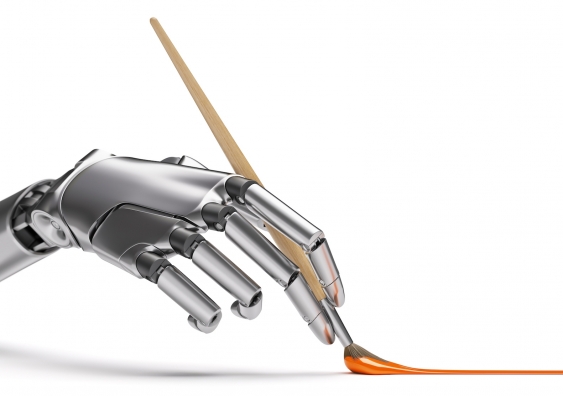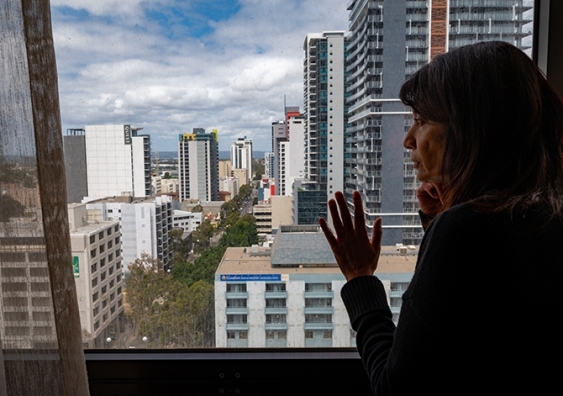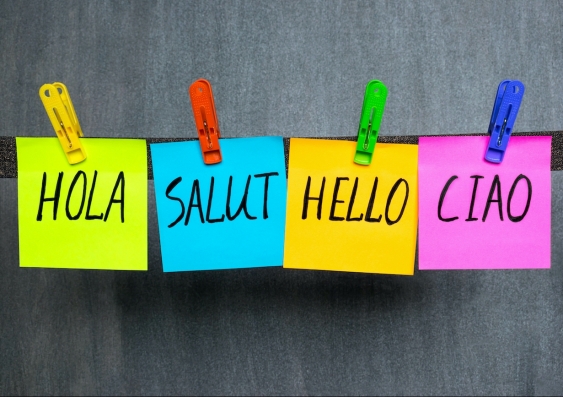Language learning, sleep studies, quarantine quandaries: what we read in 2021
UNSW Arts, Design & Architecture stories explored a range of ideas, from purpose-built quarantine facilities to whether artificial intelligence could create art.
UNSW Arts, Design & Architecture stories explored a range of ideas, from purpose-built quarantine facilities to whether artificial intelligence could create art.

Ben Knight
UNSW Media & Content
(02) 9065 4915
b.knight@unsw.edu.au
Listening to music could hold help with getting a better night’s sleep, according to research from UNSW PhD student in music psychology Thomas Dickson.
His study with Professor Emery Schubert, Musical Features that Aid Sleep, identifies the specific characteristics of music that is successful in aiding sleep.
The study revealed music that aided sleep had more emphasis in lower frequencies such as a stronger bass, had a slow and sustained duration of musical notes, and had non-danceable rhythms.
“In music terms, the music had quite a dark mix, it was legato, and was not complex or strong in rhythmic activity,” Mr Dickson said.

If you’re one of the many people who struggle to switch off come bedtime, the findings of the study might give you some hope – and the songs – you need to help you get your dream on. Photo: Shutterstock.
The research also suggests it’s not just classical music or lullabies that can help people sleep. In fact, individuals can fall asleep to a wide variety of music genres.
Listening to music changes what can be a stressful experience of trying to sleep into a more pleasant one, Mr Dickson said. As well as inducing relaxation and a sleepier state, music offers a distraction from stressful thoughts and can also mask out distracting noises in the environment.
“Music has a solid evidence base as one of the better researched non-pharmacological sleep aids that can improve individual’s sleep, both in terms of insomnia and the quality of sleep.”
Intensive Care Unit (ICU) towers redesigned by Industrial Design students made a timely arrival at the Prince of Wales Hospital earlier this year. Housing a new generation of equipment, including ventilators, they will prove even more useful during the pandemic when ICU capacity needs to surge.
The process of redesigning the ICU tower required hospital staff and the industrial design students and staff at UNSW to work together closely over several years. For Senior Lecturer in Industrial Design, Dr Miles Park, the redesign was an opportunity to give his industrial design students a project with practical application.

The new model of the equipment tower is ready for work in the Intensive Care Unit. Photo: Supplied.
Dr Park’s 2019 honours-year students built on the work of those in 2018. Then in 2020, Nicholas Matkovic continued developing the ICU tower independently, using it as the capstone project for his industrial design honours year.
“The ICU tower was a real example of how you can’t design things in a silo. We’re taught about co-design and the importance of involving the users in the process. It’s the result of their contributions,” Mr Matkovic said.
“It’s a really lovely thing to know that I may be contributing to making the everyday working lives of those frontline ICU workers just that little bit easier.”
Artificial intelligence (AI) is entering the artistic arena, and it is fundamentally changing creativity and culture as we know it.
Oliver Bown, Associate Professor and Co-Director of the Interactive Media Lab at the School of Art & Design, said that as algorithms get smarter, computers will only play more of a role in creating music, art, and other cultural artifacts.
“While much of the discussion about artificial intelligence centres around automation and labour from an economic perspective, this particular case is in some ways more salient to our lives,” A/Prof. Bown said. “We’re cultural beings, and artificial intelligence has the potential to fundamentally impact the way we do culture and the way we might understand ourselves.”

Generative art: artistic works created with artificial intelligence could become more common. Photo: Shutterstock.
A/Prof. Bown examines the psychology of creativity and algorithmic automation in his book, Beyond the Creative Species: Making Machines that Make Art and Music. The book draws upon developments in artificial intelligence and machine learning, design, social theory and psychology of creativity to examine the impact of advanced generative technologies on creative fields.
“We are seeing rapid advances in applied machine learning at the moment, and we’re shifting from the gimmick stage, where the fact we’re doing it is the most exciting thing, to a more everyday use phase,” he said.
Earlier this year, UNSW experts put forward the case for constructing purpose-built COVID-19 quarantine facilities in each state, regardless of the nation’s progress with vaccinations.
According to Dr Ahmed WA Hammad, an expert on construction systems and methods, said the facilities could be built relatively quickly and cheaply as modular structures using prefabricated components.
He said modular buildings, fabricated off-site away from the construction zone, would be the most effective way to build facilities that meet health and logistical requirements.

Critics of the hotel quarantine system say quarantine buildings should only be single storey. Photo: Shutterstock
“Using modular designs is very similar to building with Lego, where the ready-built units are stacked together to form your buildings,” Dr Hammad said. “Modular construction is safe, proven to be more sustainable, and is quicker to build than your traditional construction method.
“But when you have economies of scale – in other words, making structures that can accommodate hundreds, or even thousands of returned travellers – these costs will definitely go down.”
Dr Hammad said cost effectiveness can also be built in by playing the long game – making the structures adaptable to other uses if and when the pandemic comes to an end.
It turns out that learning a language could have some unexpected upsides, and there’s never been a better time to start learning than now.
Language educator Associate Professor Andy Gao, UNSW School of Education, said aside from being a great hobby or addition to your resume, perhaps the most important benefit is that it opens our perspectives. In his words, it fundamentally changes who we are.
“Learning languages is an enriching and rewarding experience, and there are many tangible benefits in terms of opening up different career options,” A/Prof. Gao said. “But more importantly, learning a different language is an opportunity to expand your understanding of other people and their culture, including your own people and culture, and create a more enriching life.”

Learning another language can help expand your horizons and your worldview. Photo: Shutterstock.
Associate Professor Mira Kim, UNSW School of Humanities & Languages, agrees. The translation and interpreting studies expert said language learning can expand your horizons and your worldview.
“If you can understand the language, then you have more intimate access to the knowledge that is constructed in the language,” A/Prof. Kim said. “You can feel something you can’t necessarily feel through translation…because language is not just about grammar or words, but it also expresses a lifestyle and a way of thinking.
“It can be a really humbling experience to learn another language because you will find it’s not really easy to learn another language,” she said. “It’s really the best way to put yourself in other people’s shoes.”